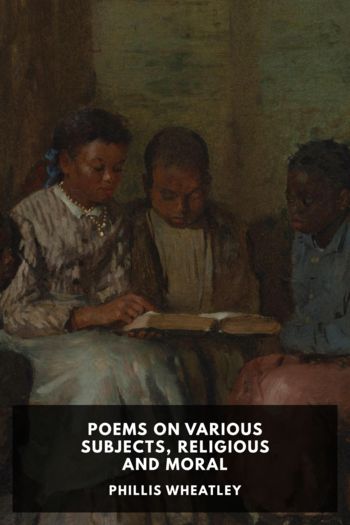Malaria and Rome: A History of Malaria in Ancient Italy, Robert Sallares [reading a book TXT] 📗

- Author: Robert Sallares
Book online «Malaria and Rome: A History of Malaria in Ancient Italy, Robert Sallares [reading a book TXT] 📗». Author Robert Sallares
¹⁷⁰ North (1896: 145–7); Bellincioni (1934). Hay et al. (2000) observed a three-year cycle of P. falciparum epidemics which could not be correlated with climatic trends in a highland region of western Kenya, and suggested that intrinsic population dynamics offer the most parsimonious explanation of the intervals between epidemics. However the evidence from Italy strongly supports climatic explanations for malaria epidemiology in Europe in the past.
¹⁷¹ Pliny, Ep. 2.17.25.
¹⁷² Dennis (1878: 222–34) on Rusellae, which is situated about 170 metres above sea level, while Vetulonia is around 300 metres above sea level.
112
Ecology of malaria
developed and then gradually became cut off from the sea.¹⁷³ The flood plain of the river Ombrone was too flat for drainage purposes, like the Pontine plain. In the early modern period the increasing use of quinine played a more important role in reducing malaria in the province of Grosseto than the bonifications.¹⁷⁴ However, the final blow to malaria in Italy as a whole was delivered by the insecticides DDT (against adult mosquitoes) and Paris Green (against mosquito larvae) during and after the Second World War, for example during the operations to defeat the terrible epidemic in the Monte Cassino region. Consequently the balance of probability is that drainage operations in Roman times, when quinine and DDT were not available, had limited effects on malaria, just like their early modern counterparts. Anopheles mosquitoes still exist in the Maremma in spite of the bonifications.¹⁷⁵
Besides deforestation in the uplands, intensive farming in the vicinity of Rome to feed the burgeoning urban population also played a role in soil erosion, which increased enormously in Roman times. The rate of soil erosion in Latium increased ten times in the second century compared to its previous rate. This may be attributed to dense settlement around the city of Rome, as suggested by the Capena and Veii archaeological field surveys, and intensive market gardening to produce food for the increasing urban population.¹⁷⁶ We shall see in Chapter 8 below that there was a strong causal connection between gardening and malaria.
¹⁷³ Pinto (1982: 13–14).
¹⁷⁴ Ciuffoletti and Guerrini (1989: 67, 95, 136).
¹⁷⁵ Raffaele and Coluzzi (1949); Garaci (1947); Merzagora, Corbellini, and Colluzi (1996).
Alberto Coluzzi led the operations against this epidemic. Malaria epidemics are attested in the Monte Cassino region and the valley of the River Liri towards Frosinone as far back as the early medieval period: e.g. chronica monasterii Casinensis 1.22, ed. H. Hoffmann (1980), Die Chronik von Montecassino ( Monumenta Germaniae Historica. Scriptores, xxxiv): Qui videlicet sanctus vir cum depositus fuisset septimo idus Octobris, in loco, quo reconditus est, multos febre detentos diversisque lan-guoribus oppressos, ex fide poscentes ad suos cineres precibus ac meritis suis pristine saluti restituit (This undoubtedly holy man [sc. abbot Deusdedit], when he was buried on 9 October [834 ], in the place, in which he rests, restored to their previous good health many people gripped by fevers and oppressed by various kinds of weariness, who in accordance with their faith invoked his ashes with prayers and their own services.); 2.96 Sed cum predictus apostolicus Romana febre iam dudum langueret, circa ipsam natalis Domini festivitatem adeo graviter infirmatus est, ut pro certo se mori putaret [December 1057] (However since the above-mentioned bishop had already long been severely afflicted by Roman fever, he was so ill about the time of the festival of the birth of Christ that he thought that it was inevitable that he was going to die.), cf.
2.88, 90.
¹⁷⁶ Judson (1968); Potter (1979: 120–37) recorded large numbers of villas by c. 100 (with slave labour forces), but few significant towns occupied by a free population.
Ecology of malaria
113
Substantial erosion and redeposition of sediments has also occurred since the classical period. The consequence is that the modern landscape is quite different from the ancient one. Recent research in the Fiora, Marta, Treia, and Valchetta river valleys has drawn a very sharp contrast between the ancient and the modern river systems:
The sedimentology of the





Comments (0)